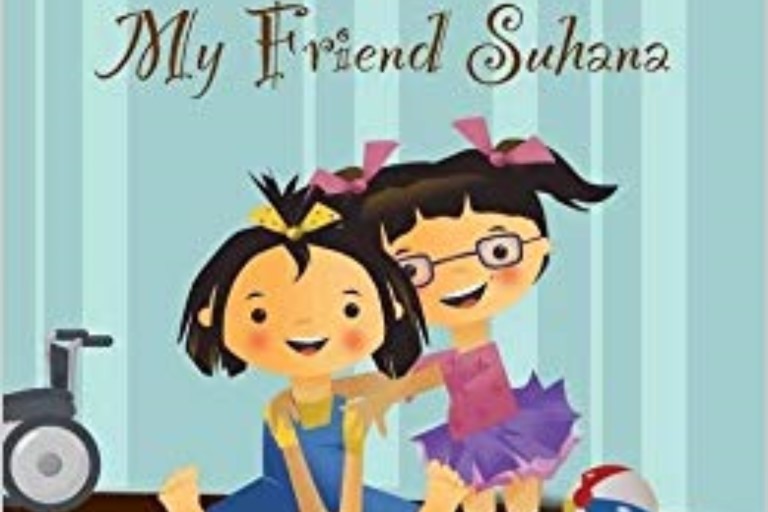
My Friend Suhana: A Story of Friendship and Cerebral Palsy
Shaila Abdullah
This fictional book, written by a mother and daughter team and based on their real-life experiences, introduces readers to 7-year-old Suhana, a young girl with cerebral palsy. Suhana becomes friends with another 7-year-old girl who is a volunteer at the special needs community center Suhana attends. Although Suhana “cannot stand, walk, talk, or play,” the two girls become special friends “of the heart.” An authors’ note at the end of the book gives a child-friendly definition of cerebral palsy and encourages young readers to reach out and make friends with children who have disabilities and other special needs. The story also acquaints children with the concepts of volunteerism and community service and encourages the qualities of kindness, patience, and helpfulness to neighbors in need. My Friend Suhana received the 2016 Dolly Gray Children’s Literature Award. Recommended for elementary and intermediate grades.
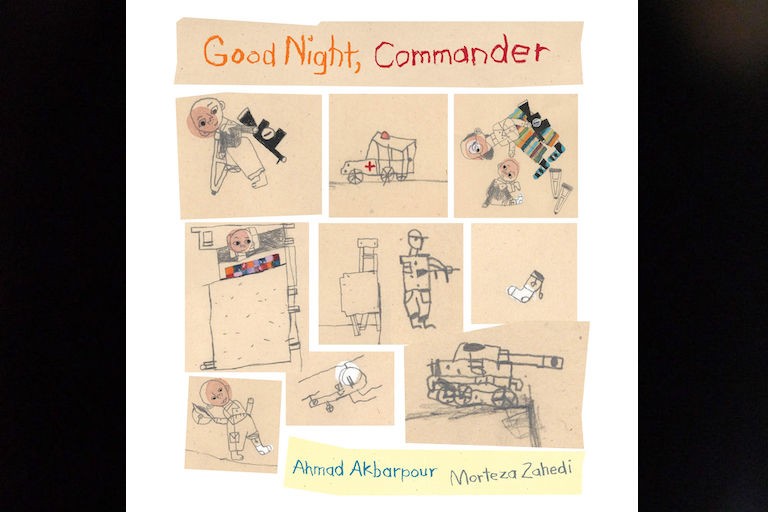
Good Night, Commander
Ahmad Akbarpour
This story finds the main character, a boy, living in Iran after the Iran-Iraq War that was fought from 1980 through 1988. The boy is missing his leg as result of the fighting, and now wears a prosthesis. His mother has been killed. The boy pretends he’s a commander for the army and is preparing to fight his enemy to avenge his mother’s death. Although his father has told him that he should take his leg while he’s at home, the boy is afraid the enemy will find him without his leg, so he wears it anyway. The boy imagines the enemy commander is a lot like him – someone who has lost both his mother and his leg in the fighting. The boy shows the enemy commander his own prosthesis and imagines that he lets him borrow it for the night. The boy then orders his soldiers to quit fighting and imagines that his mother telling him from her picture, how proud she is of him. Originally published in Persian, this book has received accolades from both the International Board on Books for Youth (IBBY) and UNICEF. This is a powerful story that includes the depiction of how a boy values and uses his prosthesis. Recommended for upper elementary or early middle school readers.
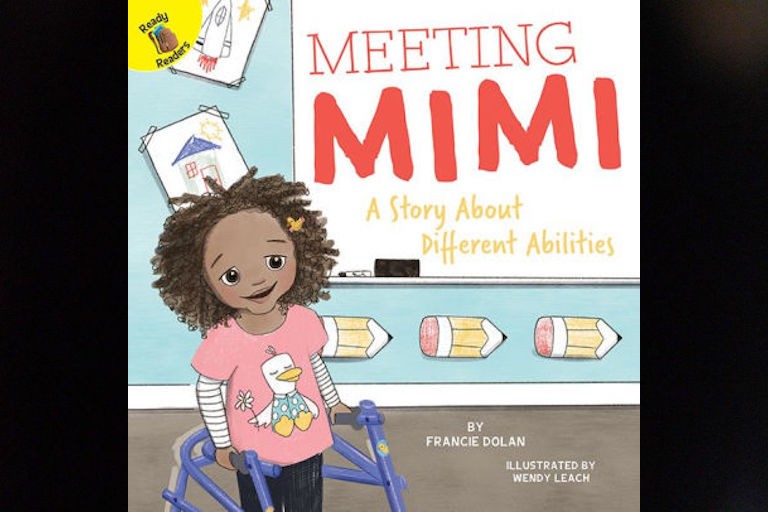
Meeting Mimi: A Story about Different Abilities
Francie Dolan
When Mimi enters a new school, the other children want to know all about her, including the reason she uses a walker to move around. Mimi makes friends with her new classmates by answering their questions plainly and with good humor. This simple text empowers children with disabilities to speak up and encourages children who do not have disabilities to be friendly, kind, and helpful to classmates who do have disabilities. The book also can be used by adults to teach children about complicated physical disabilities that leave some children unable to walk. Lovely, sensitive illustrations portray a multiracial classroom led by a male teacher of color. Endpapers encourage literacy development with tips for using reading strategies, word lists, and reading comprehension questions. Recommended for pre-school and elementary age school children.
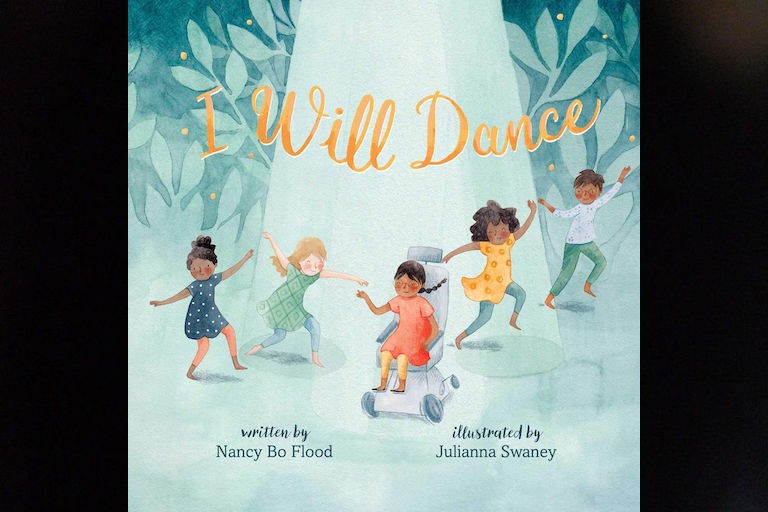
I Will Dance
Nancy Bo Flood
Marketing Summary: "Like many young girls, Eva longs to dance. But unlike many would-be dancers, Eva has cerebral palsy. She doesn’t know what dance looks like for someone who uses a wheelchair. Then Eva learns of a place that has created a class for dancers of all abilities. Her first movements in the studio are tentative, but with the encouragement of her instructor and fellow students, Eva becomes more confident. Eva knows she’s found a place where she belongs. At last her dream of dancing has come true."
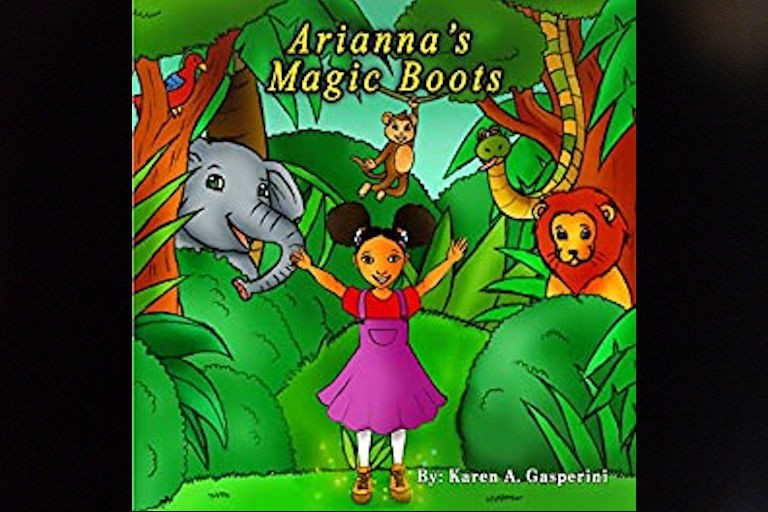
Arianna's Magic Boots
Karen A. Gasperini
The text tells a simple and easily followed story inspired by the real life of five-year-old Arianna, a little girl who wears leg braces to help her walk. Arianna’s “Magic Boots” (also known as ankle-foot orthoses or AFOs) come equipped with sneakers that carry her to exciting, new adventures when she closes her eyes, shouts “Away we go!” and stomps her feet three times. In this first book, Arianna begins a typical day by brushing her teeth, getting dressed, eating breakfast, and traveling to her physical therapy appointment. During her physical therapy session, she uses her imagination to turn her Magic Boots into safari boots that take her on a jungle adventure where she feeds the animals and helps a baby monkey reunite with its family. Before she knows it, her physical therapy session has ended, and Arianna returns to the real world ready for another adventure. This story teaches that even if we experience physical limitations, our imaginations have no limits. Includes a great explanation of how a physical therapist uses exercises to help Arianna strengthen her body. Colorful pages will attract early childhood educators and kindergarten to third graders. Of concern is that the illustrations misrepresent the habitats of the animals who live on the African savanna.
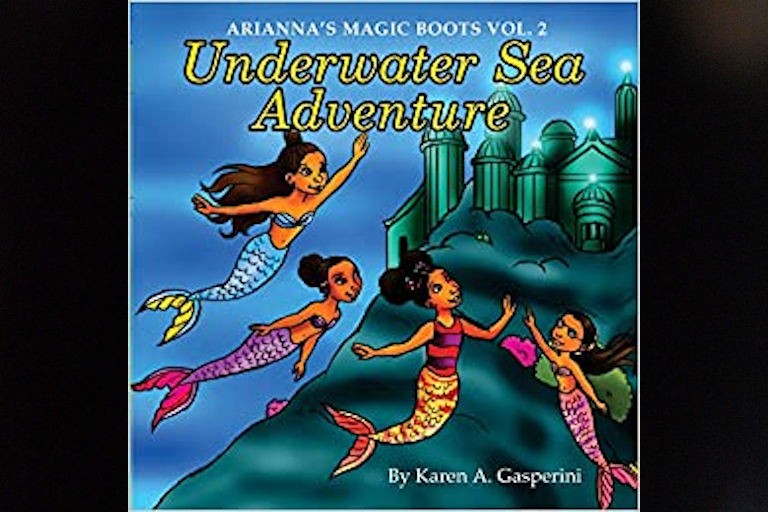
Arianna’s Underwater Sea Adventure
Karen A. Gasperini
In this second adventure in the Arianna picture book series, Arianna’s “Magic Boots” take her on a trip to the beach with her family and on an underwater encounter. This time when Arianna closes her eyes, shouts “Away we go!” and stomps her feet three times, her Magic Boots (also known as ankle-foot orthoses or AFOs) turn into a mermaid tail and take her underwater where she meets three mermaid sisters. Arianna makes friends with the sisters, helps them locate special shells and pearls to create a beautiful bracelet for their older sister’s birthday, then dances and sings with them in celebration. Before she leaves the party and returns home, the sisters surprise her with a bracelet of her own. When she is back on the beach with her parents, Arianna teaches them the dance she has learned and admires the bracelet she was given. Lively and colorful illustrations reinforce the message that we are only limited by our imaginations. Of special note, one of the mermaid sisters wears glasses and another wears an assistive listening device, both illustrated accurately.
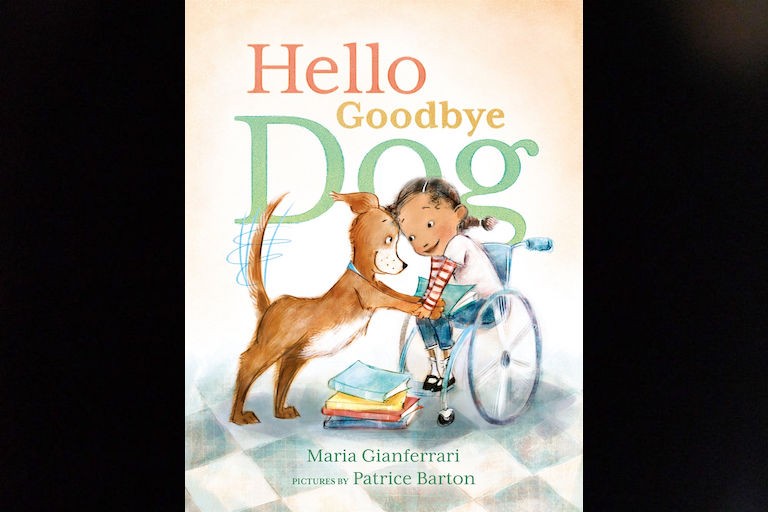
Hello Goodbye Dog
MARIA GIANFERRARI
This book relates the adventures of Zara, a girl who uses a wheelchair, and her dog, Moose. Moose loves to hear the word “hello” so that she can be close to Zara, but hates the word “goodbye” because it means she’ll have to leave Zara’s side. Moose follows Zara to school, but Zara is told that Moose must leave the premises because dogs aren’t allowed in the classroom, in the library, or in the lunchroom (where she makes a giant mess!). The solution, suggested by Zara herself (demonstrating agency and initiative), is to send Moose to therapy dog school where Moose earns a certificate permitting her to become the school’s reading therapy dog. The author supplements the story with an endnote about the purpose and training of therapy dogs which explains that therapy dogs are trained to provide general emotional support and can help children develop a love for reading. This is a joyful book with amusing and attractive pictures that illustrate a diversity of children and adults of multiple ethnicities. Word repetition throughout the text contributes to the development of a sight word vocabulary. Recommended for parents, teachers, and a broad range of children.
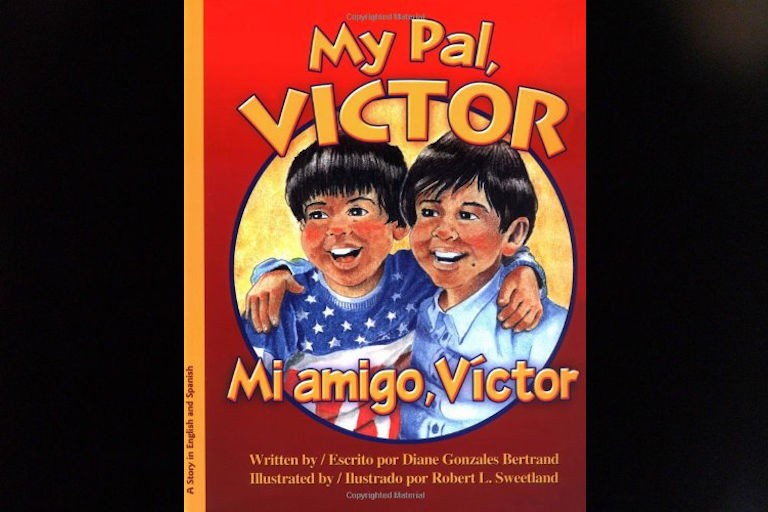
My Pal, Victor
Diane Bertrand Gonzales
A boy describes the many fun things he and his friend, Victor, enjoy doing together such as creating cloud pictures, making up scary stories, telling jokes, swimming, riding rollercoasters, playing ball, blowing bubbles, eating ice cream, fishing, and generally, just enjoying their time together like any friends. Illustrations show the two friends engaged in many activities. The reader does not learn until the last page of the book that Victor is seated in a wheelchair. Although this is probably meant to demonstrate self-sufficiency and independence, in terms of a contemporary disability identity stance, Victor’s identity as a child with a disability has been lessened. Notwithstanding, the overall message from this book is that friendship is not limited by physical ability and that true friends accept each other for who they are inside. Recommended for older elementary and intermediate age children. A bilingual text (English and Spanish) adds value to the book by introducing children to other languages and cultures.
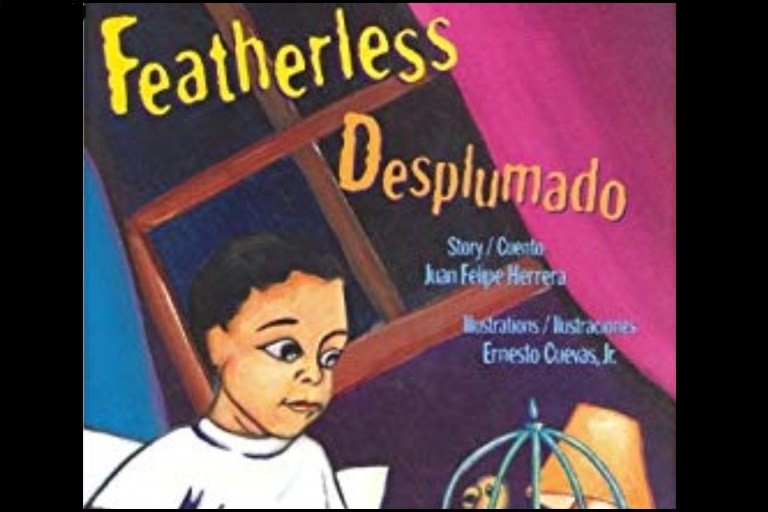
Featherless
Juan Felipe Herrera
Tomasito and his father have just moved to a new town and all the kids at school ask Tomasito why he’s in a wheelchair. Tomasito, who has spina bifida, feels sad that he hasn’t yet made friends. To help cheer him up, his father buys him a pet bird who is featherless and has one leg that is misshapen. Tomasito is disappointed in the bird and his perceived sense that it will not be able to fly, due to its having no feathers. Soon, Tomasito makes a new friend at school, Marlena, who encourages him to join the school’s soccer team. He does and discovers new skills as he excels at soccer, all-the-while finding a new appreciation for his pet bird. Written in both English and Spanish, this book shows Tomasito’s excitement and enjoyment in discovering his own potential. Recommended for elementary-aged children.
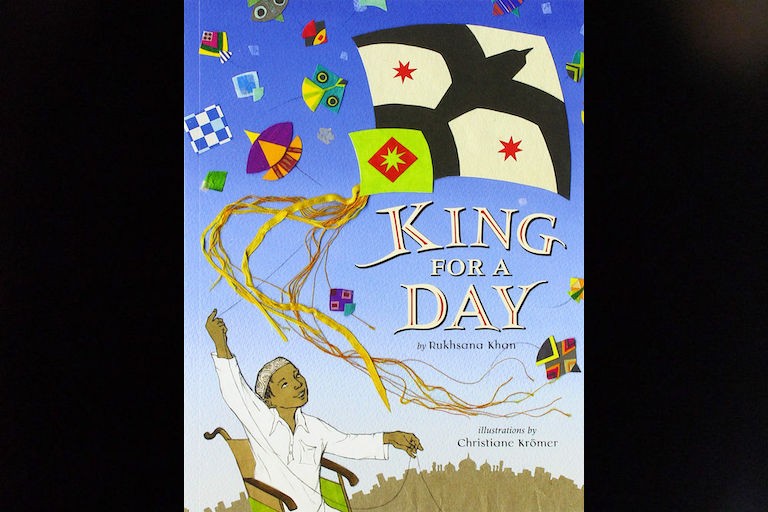
King for a Day
RUKHSANA KHAN
In Lahore, Basant is the most exciting day of the year, when people celebrate Spring and test their kite-flying skills. Malik has made a kite he’s called Falcon. Kites are flown against each other in fights to see whose kite can cut the strings of other kites. From his rooftop, Malik uses Falcon to fly against the kites of a neighboring child, who has also bullied Malik and his siblings. After defeating the bully’s kites, Malik moves on to other kite fights and defeats those flyers as well, with the help of his brother and sister. Having defeated all the other flyers, Malik is the king of Basant. Although never mentioned, Malik is featured as using a wheelchair. The illustrator utilizes mixed materials to create beautiful kites and other features of the children’s Basant celebration. Highly recommended for elementary-aged students.
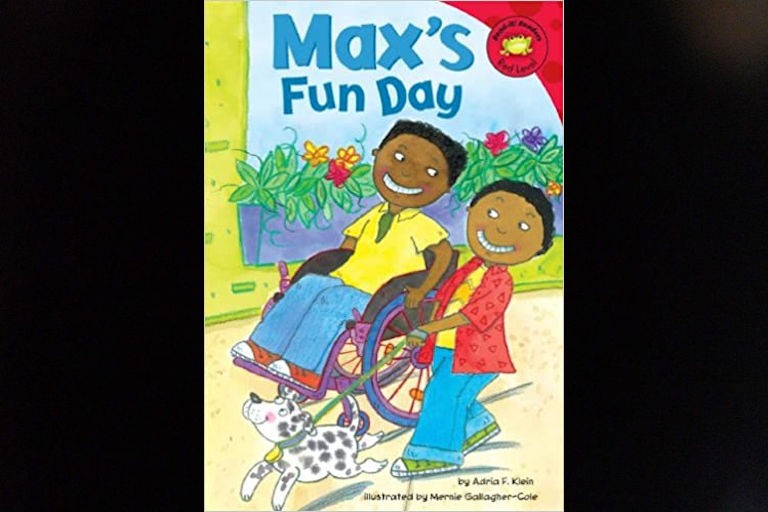
Max's Fun Day
Adria Klein
Max and Don are good friends who enjoy going places and doing many things together. Over the course of one day they visit a petting zoo and the local library with Max’s mom and go out to dinner with Don’s parents. The story illustrates the friends’ similarities (they both like ice cream) and their differences (Don is in a wheelchair) and teaches children who read the book about individual differences. It also presents positive examples of parent-child relationships. Lively and colorful illustrations portray a wide range of children from multi-ethnic backgrounds. This book is one in the series of “Read-It! Readers Red Level” which, according to the publisher, “presents familiar topics using common words and repeating sentence patterns.” Recommended for school age children.
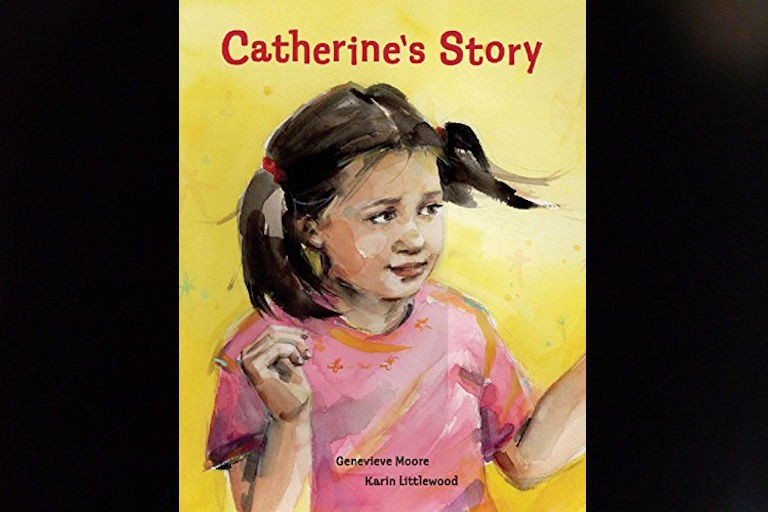
Catherine's Story
Genevieve Moore
Marketing Summary: "What makes Catherine so special? She can't talk, she can't walk like her cousin Frances can. But Catherine listens very hard (hardly anyone does that), and she can walk in her special shoes, but when Frances tries, she just falls over! And her claps are so quiet that hardly anyone can hear them. These are the things that make Catherine special and because her family knows how special she is, this makes them feel special too. This is the story of a child born with severe additional needs that focusses on the special nature of her abilities. Written from the first-hand experience of the author's niece, this is a thoroughly researched and heart-warming book that will enlighten all who read it. Foreword by Jacqueline Wilson."
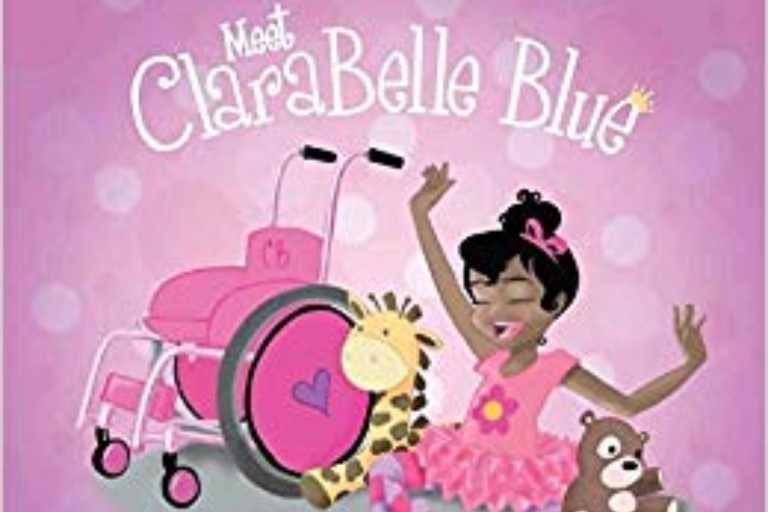
Meet ClaraBelle Blue
ADIBA NELSON
Told in rhyming text, this story is about Clarabelle Blue, who uses a wheelchair and a walker. The book situates the narrators as Clarabelle Blue’s mother and one of her classmates. The mother describes how Clarabelle Blue is just like everyone else and the classmate asks how that is so. Throughout the book, Clarabelle Blue’s mother explains that Clarabelle’s day-to-day actions are just like the classmate’s, with the minor exceptions that special needs bring. Neither the text nor the illustrations position Clarabelle Blue as being “other” but nevertheless, the narrative structure of the story, which positions Clarabelle as the object of discussion rather than giving her a voice, leaves the reader with that sense. Additionally, the reader doesn’t learn anything about Clarabelle Blue’s disability – just that she uses a wheelchair and walker. Regardless, this book would be good to use with children to introduce the concept of special needs.
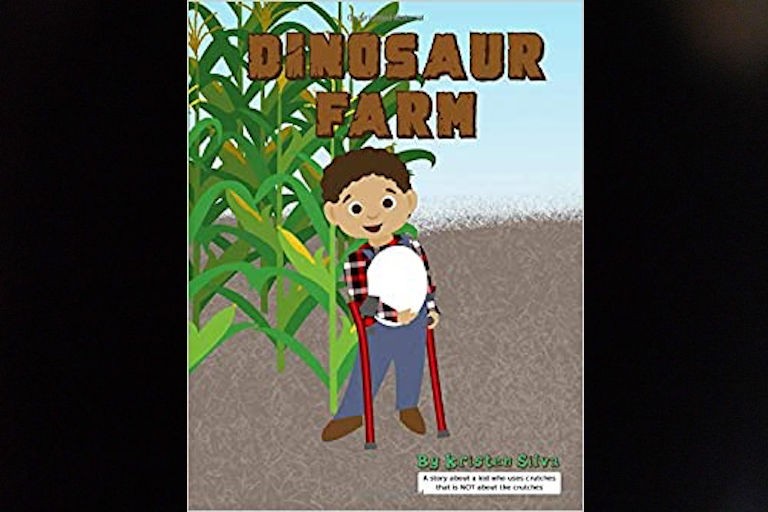
Dinosaur Farm: A Story about a Kid Who Uses Crutches That is Not about the Crutches
KRISTEN SILVA
In this series of books which, according to the author, has been written specifically to empower and “serve kids with physical differences by creating relatable main characters and starring them in stories that are not about their physical differences.” Three of the books described here feature children of color who have a variety of physical differences. Mateo (who uses crutches), Ethan (who has vitiligo), and Raphael (who uses a walker) each individually star in stories with the same text about a child who loves dinosaurs and discovers what he thinks is a dinosaur egg on his grandparent’s farm. The children’s physical differences are never mentioned in the texts of the stories. Instead, Mateo’s crutches, Ethan’s vitiligo, and Raphael’s walker are portrayed matter-of-factly through the books’ illustrations. In one way, the stories present positive representations of individual differences and remove the stigma. On the other hand, because the stories are designed to offer no explanation about those individual differences, readers will be left with many unanswered questions (for instance, how did Mateo and Raphael climb up into the hayloft using crutches and a walker?). However, the storyline and character development are strong, so children will respond and interact with the stories. Teachers should be ready to fill in the gaps. Recommended for teachers to share with a wide range of ages in their classrooms.
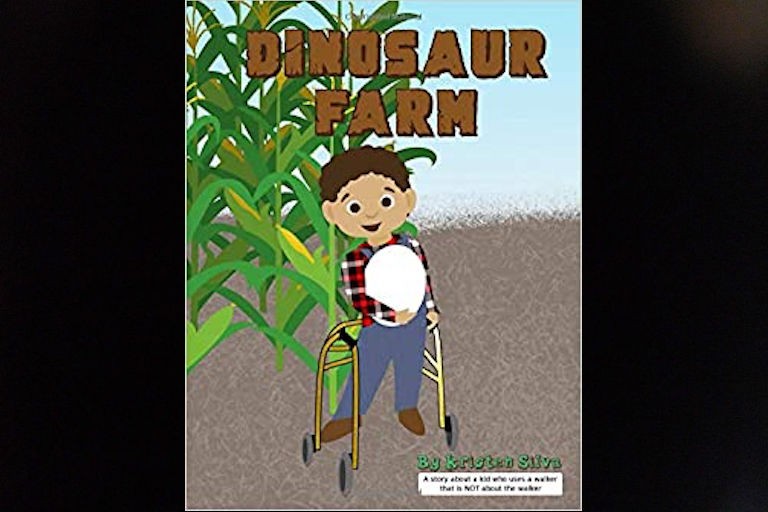
Dinosaur Farm: A Story about a Kid Who Uses a Walker That is NOT about the Walker
Kristen Silva
In this series of books which, according to the author, has been written specifically to empower and “serve kids with physical differences by creating relatable main characters and starring them in stories that are not about their physical differences.” Three of the books described here feature children of color who have a variety of physical differences. Mateo (who uses crutches), Ethan (who has vitiligo), and Raphael (who uses a walker) each individually star in stories with the same text about a child who loves dinosaurs and discovers what he thinks is a dinosaur egg on his grandparent’s farm. The children’s physical differences are never mentioned in the texts of the stories. Instead, Mateo’s crutches, Ethan’s vitiligo, and Raphael’s walker are portrayed matter-of-factly through the books’ illustrations. In one way, the stories present positive representations of individual differences and remove stigma. On the other hand, because the stories are designed to offer no explanation about those individual differences, readers will be left with many unanswered questions (for instance, how did Mateo and Raphael climb up into the hayloft using crutches and a walker?). However, the storyline and character development are strong, so children will respond and interact with the stories. Teachers should be ready to fill in the gaps. Recommended for teachers to share with a wide range of ages in their classrooms.
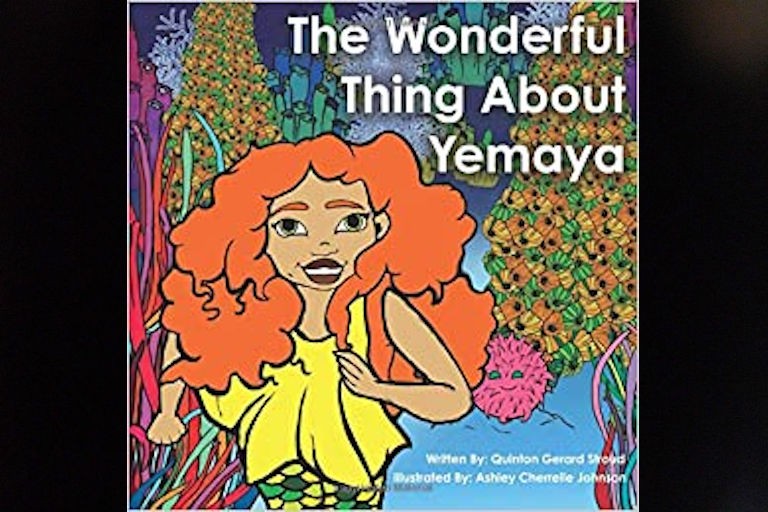
The Wonderful Thing About Yemaya
QUINTON G. STROUD
Yemaya is born with two legs instead of the one fin that her merpeople mother and father each have. As she gets older, Yemaya finds that she enjoys running, walking, and climbing more than she enjoys swimming. On her first day of school, Yemaya’s classmates stare at her and whisper, as the reader learns that they have never seen a mermaid with two legs before. This makes Yemaya feel weird and she’s ultimately not chosen to play on a team for Puffer Ball. After having a conversation about differences with her teacher who also doesn’t have a fin (she’s an octopus with tentacles), Yemaya finds the courage to join the Puffer Ball game. Her classmates begin to admire her as her legs give her the ability to kick a ball very far, making her a desirable teammate. The illustrations are bright and vibrant, but can be confusing at times. Despite this, the story provides children with the opportunity to consider what it is like to be different from each other and that despite physical differences, we’re all able to add to the fun. Recommended as a read aloud for elementary-aged children.
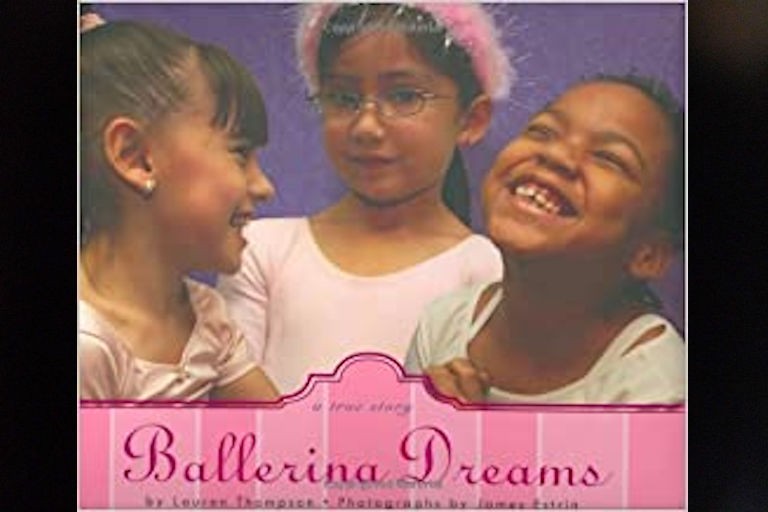
Ballerina Dreams: A True Story
LAUREN THOMPSON
This is the true story about five young girls who have cerebral palsy or other muscular disorders, who learn to perform ballet. The text and photographs describe to the reader what ballet classes were like, including the ballet movements and how the girls gained physical strength through their exercises. The story culminates in the girls’ first performance. With the help of color photographs, the reader experiences the process of preparing for the performance as well as the final ballet itself. While the author includes a separate section to explain what cerebral palsy is, the story and photos do a fine job of helping children understand the physical challenges of cerebral palsy and ways in which the girls were able to overcome those challenges. This text-heavy book is highly recommended for upper elementary-aged children who are interested in ballet or performance or anyone wishing for an introduction to cerebral palsy.
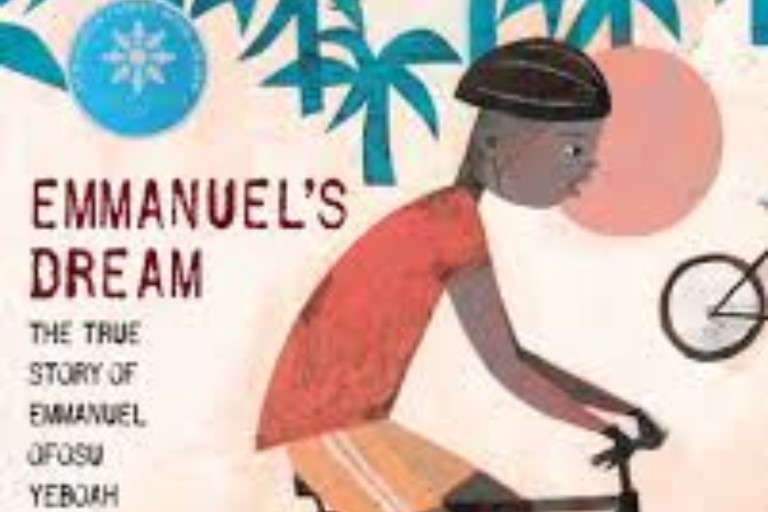
Emmanuel's Dream
Laurie Anne Thompson
This true story of Emmanuel, a boy born in Ghana, West Africa, opens with his birth and his parents’ sadness that Emmanuel has just one fully functional leg. Raised by his mother, Emmanuel is shown to overcome several physical challenges that would have left him dependent on others or unable to participate. Acting on his mother’s dying wish for him not to give up, Emmanuel develops a plan to ride a bike around Ghana and talk with people about living with a disability, with the hope that he can help people understand that those who have a disability are able in their own way. While this story is supported by colorful, attractive illustrations, it largely depicts Emmanuel’s disability as a problem to be overcome. The ultimate messages of success and acceptance suggest that elementary-aged readers may take away the sense that disability does not mean inability.
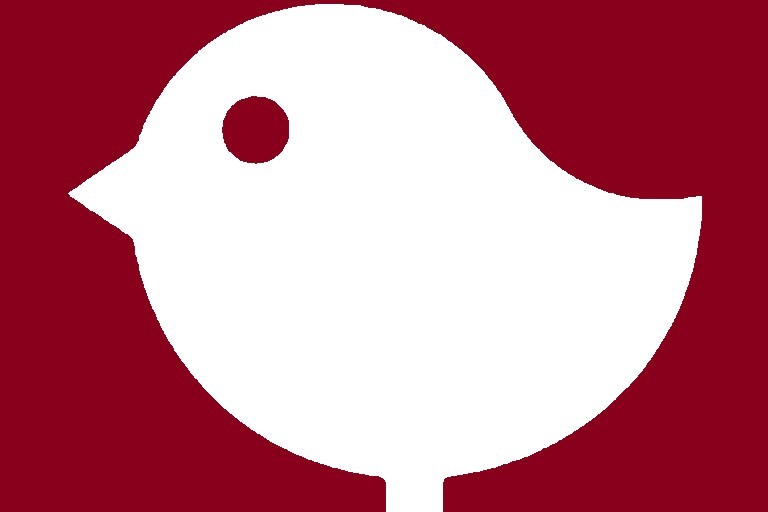
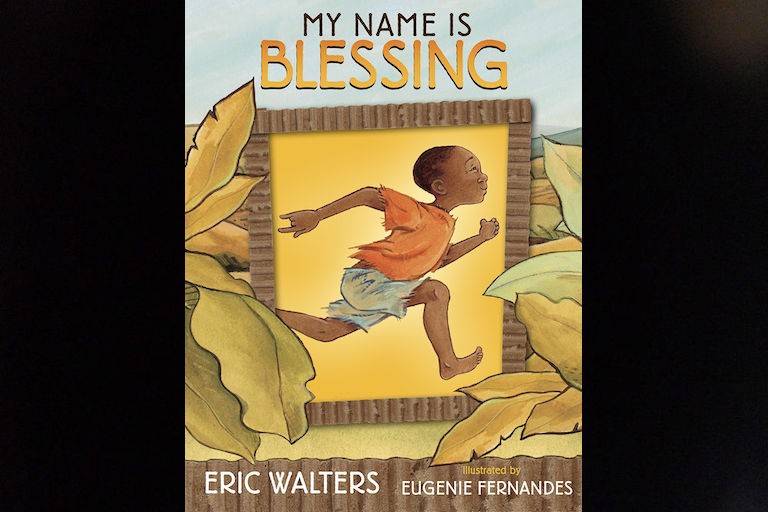
My Name is Blessing
ERIC WALTERS
Muthini lives in Kenya with his grandmother and eight of his cousins. Born with missing fingers, Muthini’s mother gives him his name, which means “suffering,” before she leaves him with his grandmother. Adults and children in the village tease Muthini about not having ten fingers but his grandmother explains that some people are born with more than others, like he was born with a bigger heart, a clearer head, and a greater spirit than others. One day, Muthini’s grandmother explains to him that she is very old and is having trouble caring for his eight cousins, all of whom are older than Muthini, so Muthini and his grandmother travel to a home that cares for orphans. Muthini’s grandmother introduces him to Gabriel, the man who manages the home, and asks Gabriel if Muthini can live there. As they shake hands, Gabriel examines Muthini’s hands and asks why he has a name that means “suffering.” Gabriel says that there is no room for “suffering” in their home but there is always room for a “blessing,” thus encouraging Muthini to change his name to Baraka, meaning “blessing.” The book is based on a true story about the real-life Baraka, which is explained at the end of the book. This beautifully illustrated story has a nice message about empathy and the importance of getting to know someone beyond their physical appearance. This story is as much about Baraka’s and his grandmother’s survival as it is about Baraka’s disability, so while this book is recommended, adults should be prepared to discuss the various layers contained this story.

Location:
